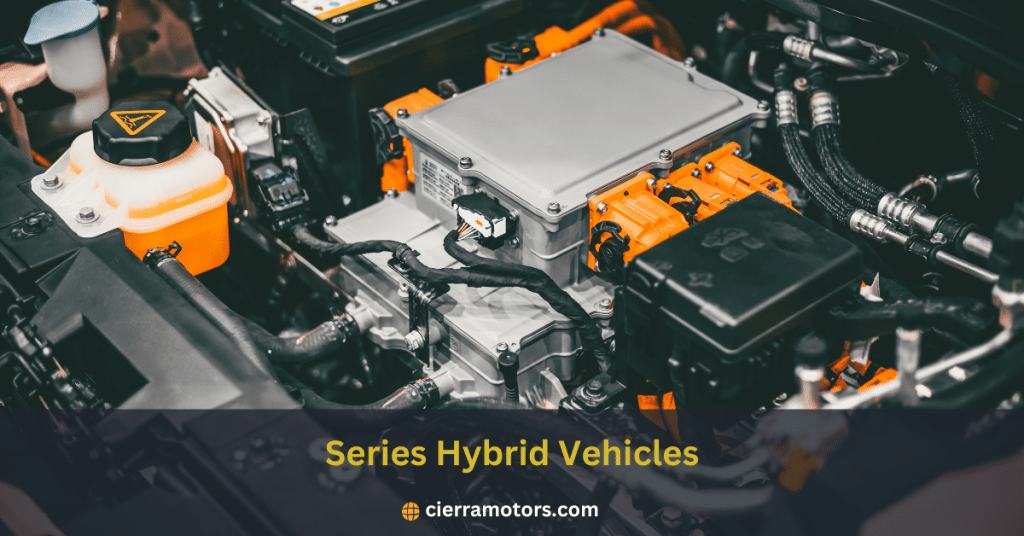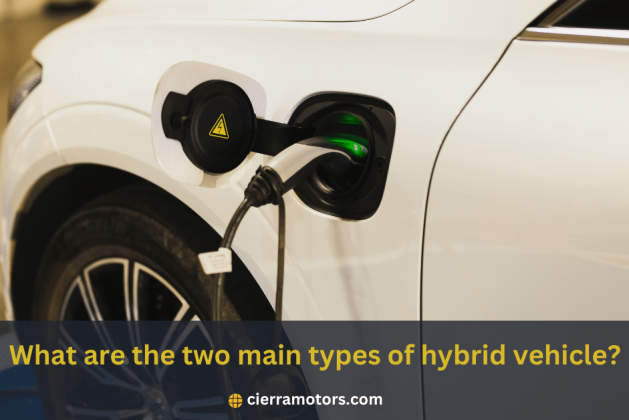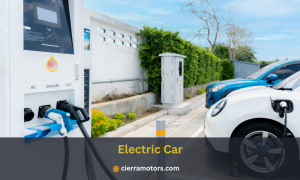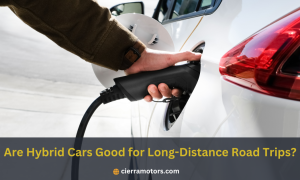Hybrid vehicles have surged in popularity as the motoring industry strives to meet eco-friendly objectives without compromising performance. As drivers and innovators look for sustainable technologies, hybrid cars have emerged as a promising solution, leveraging a combination of electric and conventional engines.
In this detailed exploration, we’ll dive into the two primary types of hybrid vehicles, dissecting their operations, environmental impact, and what they mean for the future of transportation.
A Brief Overview of Hybrid Vehicles
At their core, hybrid vehicles are designed to utilize more than one power source. In the case of automobiles, this usually involves an internal combustion engine and an electric propulsion system, which can either work together or independently, depending on driving conditions. This setup allows for increased fuel efficiency and reduced emissions, making hybrids particularly appealing to the environmentally conscious consumer.
Series Hybrid Vehicles: The Power of Sequential Energy

- A series hybrid car uses an electric motor for driving and a gas engine to make electricity
Defining Series Hybrids
In a series hybrid, the internal combustion engine is not directly connected to the wheels. Instead, it acts as a generator, producing electricity that powers the electric motors that drive the vehicle. As the name suggests, the process happens in a series, with the engine serving the sole purpose of recharging the batteries that run the motor.
The Working Principle
Once the battery is depleted, the engine kicks in to maintain the charge. This makes series hybrids particularly efficient in city driving scenarios, where frequent stops and starts require a lot of energy but less consistent power from the engine. Think of it as an electric vehicle shielded from’ range anxiety’ with a minor, incredibly efficient guardian like the ICE.
Advantages and Disadvantages
One significant advantage is the near elimination of energy-wasting engine idling. A series hybrid can turn off its engine entirely and continue to move using only electric power, which is especially useful in congested traffic. However, relying on a single electric motor for propulsion can limit power and speed, so series hybrids might not be the best choice for those who regularly drive at higher speeds.
Examples in the Market
Models such as the Chevrolet Volt and BMW’s i3 with Range Extender and various types of hybrid buses and trucks exemplify series hybrid technology in action. These vehicles have paved the way for a greener future in mass transportation, where stop-and-go energy expenditure can be harnessed with unparalleled efficiency.
Parallel Hybrid Vehicles: Blending Power Seamlessly

- A parallel hybrid vehicle combines a gasoline-powered internal combustion engine with an electric motor to drive the vehicle
Understanding Parallel Hybrids
Parallel hybrids operate with both the internal combustion engine and the electric motor engaged to drive the vehicle forward. The electric motor is typically used to assist the engine when additional power is required, and it can also function as a generator to charge the vehicle’s batteries during deceleration and braking.
Operation in the Real World
During acceleration, the electric motor and gas engine contribute power through a single mechanical linkage to the wheels. Computer controls and complex algorithms help determine power distribution, ensuring optimal efficiency and performance.
Pros and Cons
The parallel hybrid system excels on highways, where constant speeds and the need for immediate, powerful acceleration are the norm. This balance of power significantly benefits the driver, offering both good fuel economy and a performance-driven experience. However, the parallel setup doesn’t wholly eliminate idling, and its complexity can make maintenance more involved.
Notable Models Available
Iconic hybrids like the Toyota Prius and Honda Insight have anchored the parallel hybrid design, refining its capabilities over many generations. These models have become synonymous with environmentally friendly driving and feature a varied powertrain that adapts to various driving conditions.
Comparison of Hybrid Vehicle Types
Several significant factors stand out when weighing the advantages and disadvantages of series and parallel hybrids.
Performance Differences
Series hybrids typically offer quieter and smoother rides during electric mode. In contrast, parallel hybrids can provide more substantial power boosts, thanks to the combined efforts of the electric motor and gasoline engine.
Efficiency and Fuel Economy
In urban settings, series hybrids shine with the ability to minimize fuel use by utilizing electric power more often. On the other hand, parallel hybrids show efficiency on the highway, where maintaining higher speeds becomes a factor.
Environmental Impact
Both types of hybrids contribute to reducing harmful emissions when compared to traditional vehicles. However, series hybrids may have a slight edge, as they can be fueled primarily by renewable energy when charged from the grid.
Hybrid Car Batteries: The Heart of Hybrid Performance
Types of Batteries Used
For a hybrid vehicle to be successful, it must have a robust battery system. Most hybrid cars feature nickel-metal hydride (NiMH) batteries, which have been the industry standard for years due to their reliability and longevity. However, with technological advancements, many newer models are turning to lithium-ion (Li-ion) batteries, known for their higher energy density and lighter weight.
Advantages and Limitations
Both battery types have their strengths and weaknesses. NiMH batteries are tried and tested, providing stable performance and requiring less complicated cooling systems. Li-ion batteries, on the other hand, are the leading edge in battery tech, offering higher energy storage but requiring more specific thermal conditions to maintain safety and performance.
Sustainability and Recycling Aspects
As hybrids become more commonplace, the question of what happens to their batteries at the end of their life cycle becomes increasingly important. Battery recycling is a crucial aspect of hybrid sustainability. Manufacturers and recycling programs are rising to meet the challenge of handling these complex, valuable, and potentially hazardous materials to ensure minimal environmental impact.
Drawback: Why Hybrid Cars Are Bad for the Environment
Despite the many benefits of hybrid vehicles, there are some environmental concerns. The production and disposal of hybrid car batteries can have a significant environmental footprint and raise questions about their overall impact on the planet.
Expert Insights on Hybrid Technology
To better understand the future of hybrid vehicles, we spoke with leading battery technologists on their thoughts:
Shaping the Future
“Hybrid vehicles are a crucial step towards sustainable transportation. As we perfect the integration of battery technology, we inch closer to a world with cleaner air and quieter streets.”
The Vital Role of Battery Innovation
“With each breakthrough in battery technology, we’re pushing the envelope on what’s possible for hybrid vehicles. The next big leap could come from increasing the energy density of our batteries or by discovering new, more environmentally friendly materials to construct them.”
Sustainability and Recycling Efforts
“As an industry, we’re working tirelessly to develop sustainable practices for battery production and recycling. As more and more hybrid cars come off the road, it’s essential that we have robust systems in place to handle these materials responsibly.”
Conclusion
Hybrid vehicles represent a significant stepping stone towards a more sustainable automotive future. Understanding the nuances of series and parallel hybrids allows us to make informed decisions that align with our personal, environmental, and economic interests. It’s clear that as technology advances, hybrids will continue to play a pivotal role in balancing power needs with the planet’s health.
FAQs
Are hybrids better for the environment?
Hybrid vehicles can significantly reduce greenhouse gas emissions and air pollution compared to conventional vehicles. However, their environmental impact depends on factors such as battery production, fuel sources, and driving patterns.
How long do hybrid car batteries last?
The lifespan of a hybrid car battery can vary, but most are designed to last at least 8 to 10 years or more.
What happens to hybrid car batteries at the end of their life?
Old hybrid car batteries are often recycled to recover the valuable materials they contain. Recycled materials are then used in new batteries, helping close the sustainability loop.
How are hybrid car batteries being improved?
Battery technology for hybrid vehicles is constantly evolving. Engineers are working on increasing energy density, reducing weight, and improving performance to make hybrids more efficient and practical.



Leave a comment